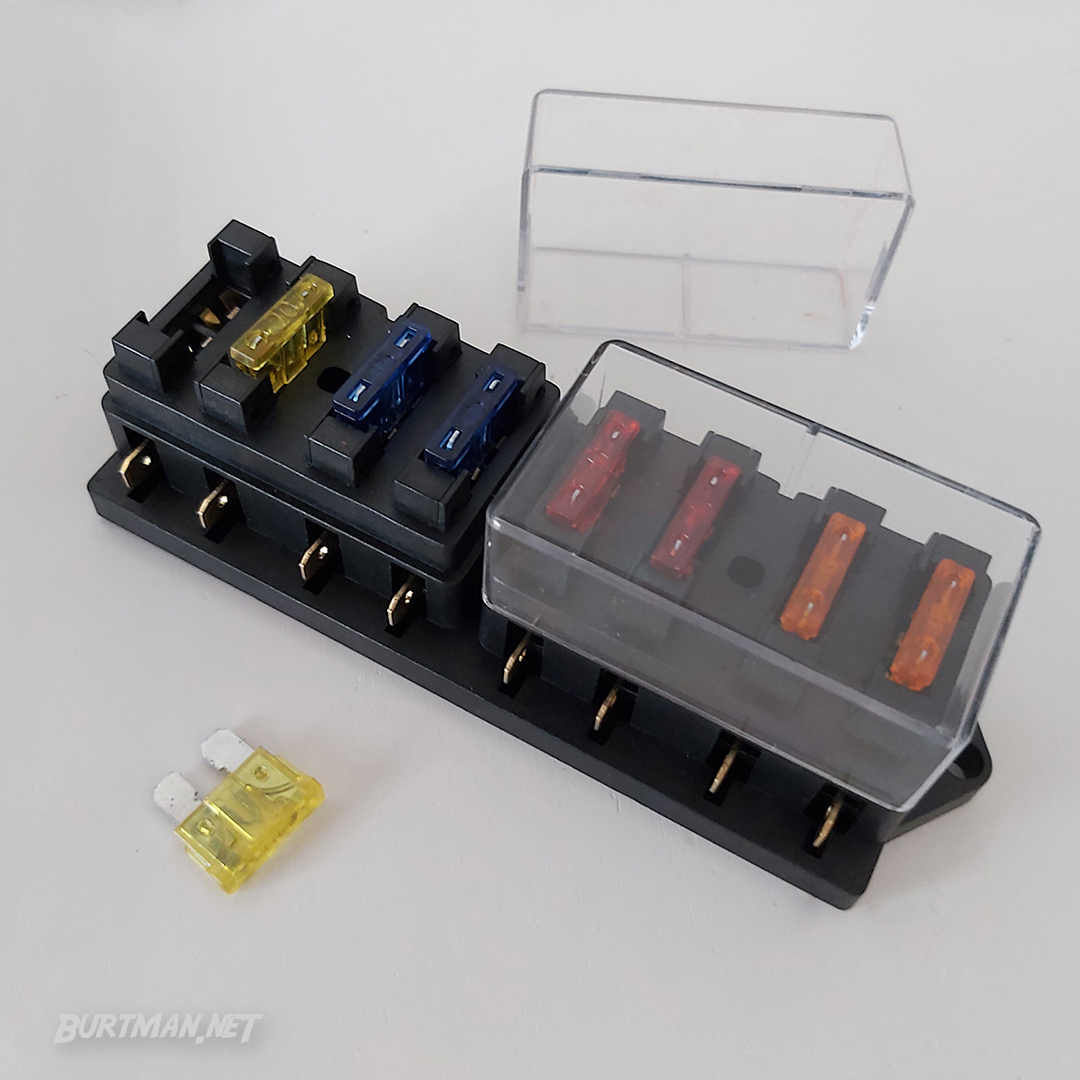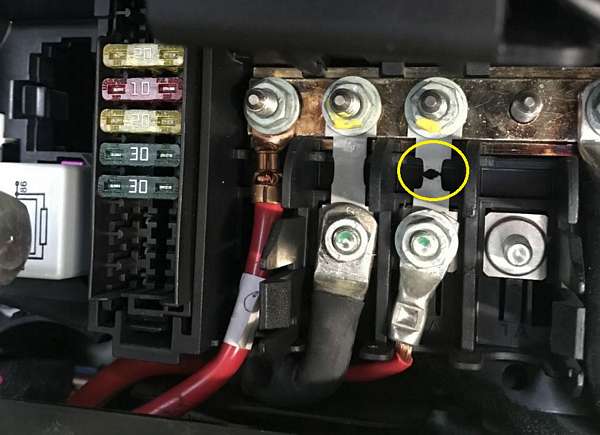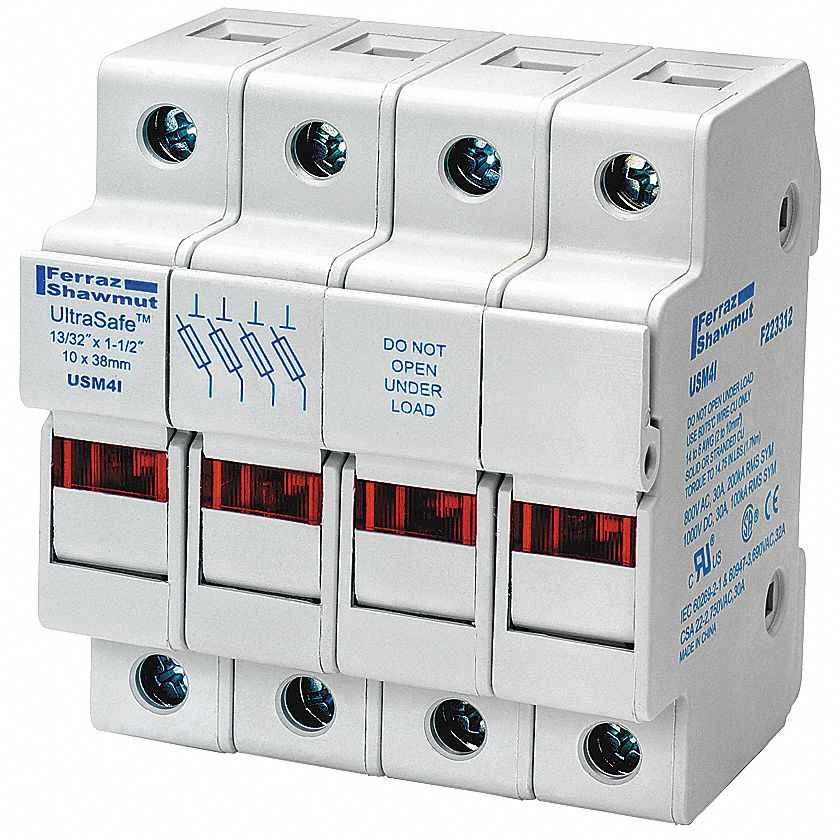Short Guide To Fuses

Updated:
Using the wrong fuse can lead to electrical problems and fire. Always check the rating on the device you are fusing and make sure you use good quality, undamaged fuses at all times.
There are several options available to you when it comes to fusing your circuits. What you ultimately choose will depend on your preference, what fits in your build, what your power needs are, etc., so here are some common fuse types and a bit of info about what each is best suited to.
Inline Blade Fuse

This type of fuse holder works with widely available "blade" or "spade" type fuses (searching either will show the same product), which are the type your van uses for all the electrical systems (with the possible exception of the glow plug fusible link, which isn't really relevant to this article).
If a fuse blows, you just pull it out of the holder and replace it with a new one of the same rating. The rating is written on the top edge of this kind of fuse, and tells you the maximum current that the fuse can safely handle. They are colored according to the rating, but it's not important to remember the colors because they all show the rating clearly.
These fuses are good for applications that will rarely overload, and you can buy the fuses in bulk for pennies. One benefit of this type of fuse is that a you can easily change the fuse rating of any given device as your needs change.
If you will not need to change the fuse rating at all, you might do even better with a circuit breaker.
Fixed Rating Breaker

Temporary Image
This type of fuse doesn't rely on a strip of metal melting at a given level of energetic load, but instead, simply trips a switch that opens the circuit, disconnecting power. This is useful for two reasons:
1. if there is something breaking your circuit and you don't know what it is, you can unplug all your devices, reset this fuse and plug them in one by one. When the breaker trips, you've found your problem. This can be done over and over without using up all your spare fuses.
2. You can disconnect a part of your circuit for safety when it's not in use. For example, when you will not be using the van for a period of time, you can quickly disconnect your battery from all devices to prevent power drain.
These breakers come in a range of styles, but all of them feature a switch of some kind that allows you to break and restore the circuit. In this example, the breaker will trip automatically at 80 Amps, as shown on the switch (80A).
Plate Fuses

Temporary Image
Typically for much heavier duty circuits, the plate fuse is much thicker than the blade type. These fuses can be stacked to create custom ratings. For example, Adding a 100A and a 20A together will create a 120A fuse. You just stack the fuses on top of each other and bolt them down. You will find this kind of fuse in the engine bay for the high tension side of the electrical system. Most likely, you won't use a fuse like this in your interior build, but it's handy to know about them in case there is a need. The replacement fuses are dirt cheap and readily available at automotive outlets.
Here, we see a fuse box that carries plate fuses for high current applications alongside small blade fuses for low current applications.

Cartridge Fuse

Temporary Image
This familiar fuse is found in many household plugs and can be purchased from convenience stores, home stores, gas stations, electronics stores and most places that sell batteries and other everyday consumables. They are available in a range of physical sizes that correspond to the amount of power they are able to handle. The tiniest ones can be rated for very small appliances and the biggest are usually around 13-16A, which are good for all household appliances like washing machines and fridges. Many caravans have control panels that take this type of fuse, and you may have appropriated such a control panel for your van build, in which case, this is the type of fuse your circuit will need.
Rail Breakers

Temporary Image
Although available, you might struggle to find this type of breaker for a DC circuit. They are almost exclusively for AC circuits. It's extremely important that you do not attempt to use such a breaker on the wrong type of circuit, because despite looking almost identical, the AC and DC versions of this type of breaker are internally dissimilar and function differently. The differences are such that a perfectly working AC breaker may entirely fail to disconnect a shorting DC circuit, which could lead to fire or worse. Don't risk it.
This type of breaker is called a rail breaker in some places because it is mounted on a rail that is screwed to the wall.
Ignition Fuses

Temporary Image
This fuse has a specific function: They are fitted between the battery and the ignition circuit to prevent the vehicle from being started when the red key is removed. Most of them contain a smaller fuse that is always connected, so that your radio clock and alarm system can continue to draw a small amount of power with the key disconnected, but the key is required for the high voltage load that the starter motor requires.
Although a good idea in principle, it's easy to pick up one of these devices, so someone else having a key that fits your ignition breaker is a given. This obviously makes the device less of a security device and more of a deterrent for opportunistic thieves. More on that subject ![]() Deterring Thieves.
Deterring Thieves.
That's pretty much all on the types of fuses you are likely to encounter in your van build, but if you want to know where and when to use a fuse in your electrical system, you should find everything you need in the  Power & Water category.
Power & Water category.
Sign In To Leave A Comment
There are no comments marked as public for this item.
Stay Up To Date





 Power & Water
Power & Water Read around 3,400 times
Read around 3,400 times For Everyone
For Everyone